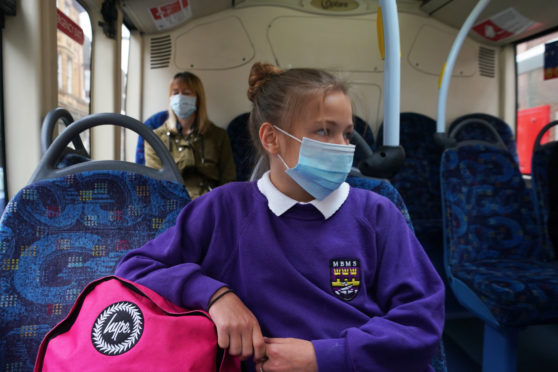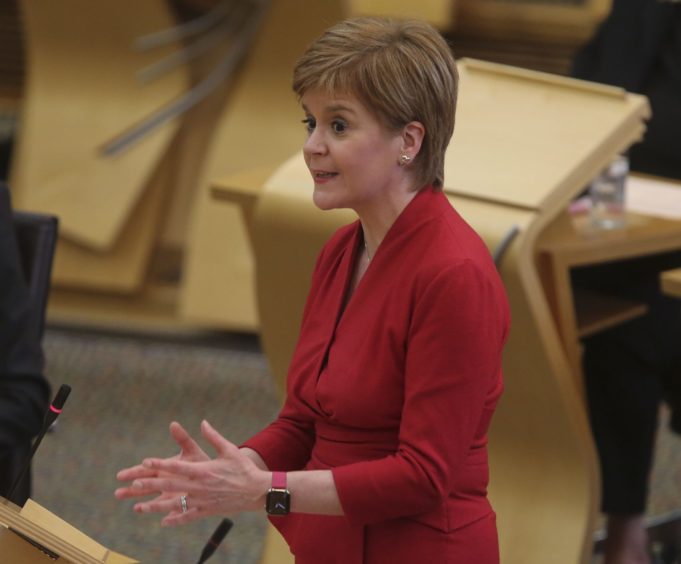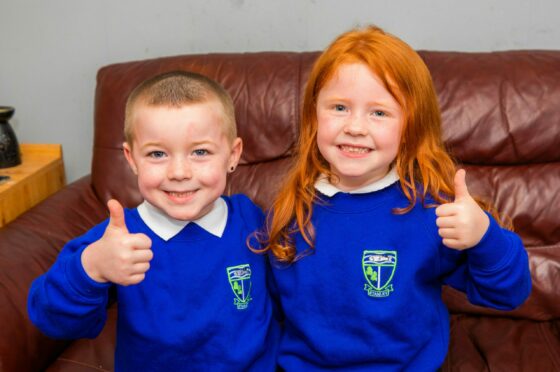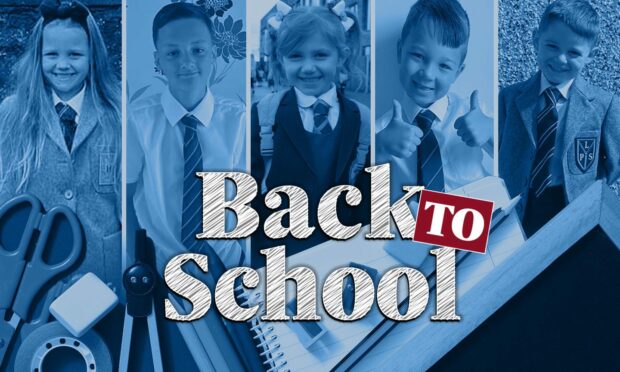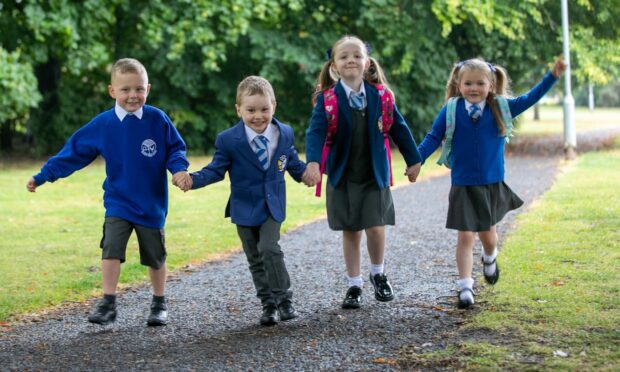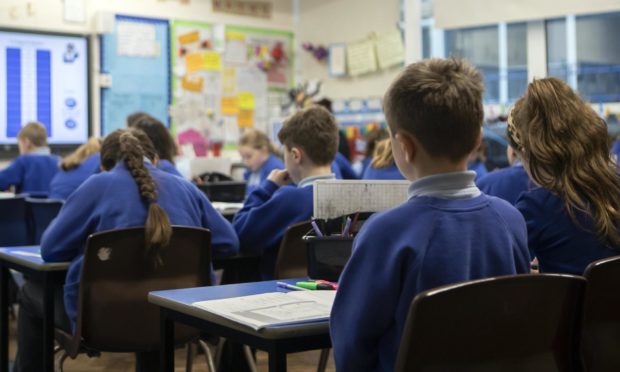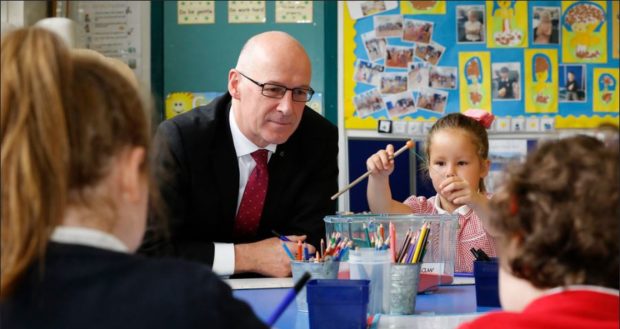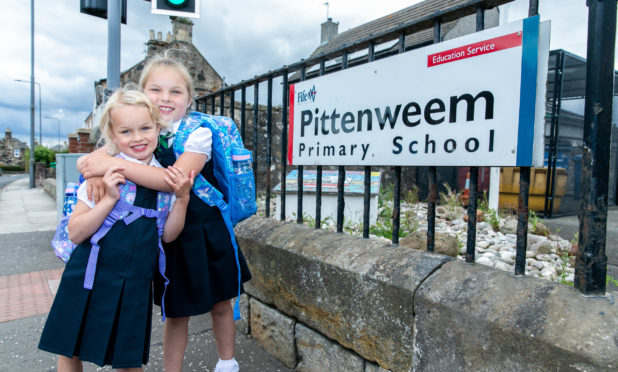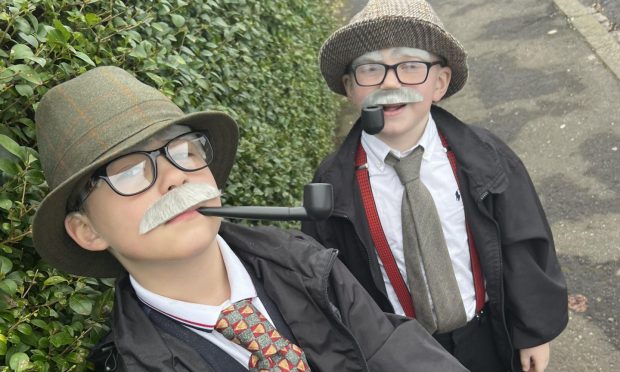The Scottish Government have confirmed how school buses will operate when schools reopen in August – but rules will differ for children who travel by public transport.
Thousands of Tayside and Fife pupils who use buses were told earlier this month that social distancing and face masks would not be required.
However local authorities have been asked to make a number of considerations for travelling to school, including seating arrangements, staggered start and finish times and “dedicated zones” for pupils.
Following the guidance issued this afternoon, local authorities are working with bus operators to determine which measures will be necessary to keep pupils and drivers safe.
More than 17,000 schoolchildren across Tayside and Fife are entitled to school transport, with the highest proportion on Fife.
Will there be restrictions to designated school buses?
While restrictions are in place for passengers on public transport, the government’s Covid-19 advisory sub-group on education and children’s issues said the risk was much lower among schoolchildren.
However many dedicated school buses are used for other purposes before and after transporting children to school and it is expected some hygiene and seating measures may be imposed to maximise safety.
The scientific advice confirmed that face coverings and distancing will not be necessary on school transport due to the current low prevalence of coronavirus.
But provided they do not introduce capacity constraints, the government have asked local authorities and bus operators to consider a range of options to further minimise risk.
- Where possible, arrangements should be in place to allow family groups and children from the same class to travel together in an effort to reduce unnecessary mixing.
- School-aged children could be assigned specific seats or may be asked to sit in ascending year groups, if councils consider it necessary.
- If vehicle capacity allows, distancing between individual passengers, or groups of passengers could be helpful, the Government advised.
- Face-to-face seating should be avoided on dedicated school transport, where possible.
Children will also be required to sanitise their hands each time they board the bus and eating and drinking will be prohibited.
Will pupils have to wear face coverings on public transport?
Children and young people travelling to and from school normally make up a large proportion of the journeys on public transport during peak times – especially in cities and in secondary school pupils.
While general guidance of face coverings and physical distancing remain in place on public transport, a number of considerations have been listed for schoolchildren.
The volume of people travelling during peak time with social distancing in place could cause capacity constraints and delays, the government acknowledged.
The guidance has issued local authorities with a range of options to improve services as a result, including making additional dedicated school transport available where constraints have been identified.
It is understood Transport Scotland have informed the government of “significant” space capacity in the coach sector.
Back to school: What safety measures will be required when schools reopen next month?
Schools may also opt to adjust the traditional start and finish times to avoid the morning and evening rush hours – but this could have knock-on impacts for staff, parents and carers.
Scientific advice from the Covid-19 advisory sub-group on education and children’s issues has recommended introducing “dedicated zones” for schoolchildren travelling on public transport at peak school journey times.
This could see children separated into designated seating areas or carriages – such as the top deck of a bus.
When seating “zones” are on the same level, one metre distancing should be maintained between schoolchildren and the general public.
Travel for children with additional support needs
Adults travelling to school alongside children with additional support needs (ASN) will generally be required to wear face coverings.
However they should consider the wellbeing and needs of pupils in their care as it may limit communication or cause distress.
Some children, including those with ASN, rely on taxi transfers to get to school.
The Government have advised physical distancing requirements are not necessary if the taxis are used for the sole purpose of transporting children to school.
Different rules will be in place for families who use private hires to travel to school and they may have to wear face masks or travel on the back seat.
Local authorities may choose to introduce Perspex shields in taxis transporting children with additional support needs or find larger vehicles for transportation in order to further minimise risk.
